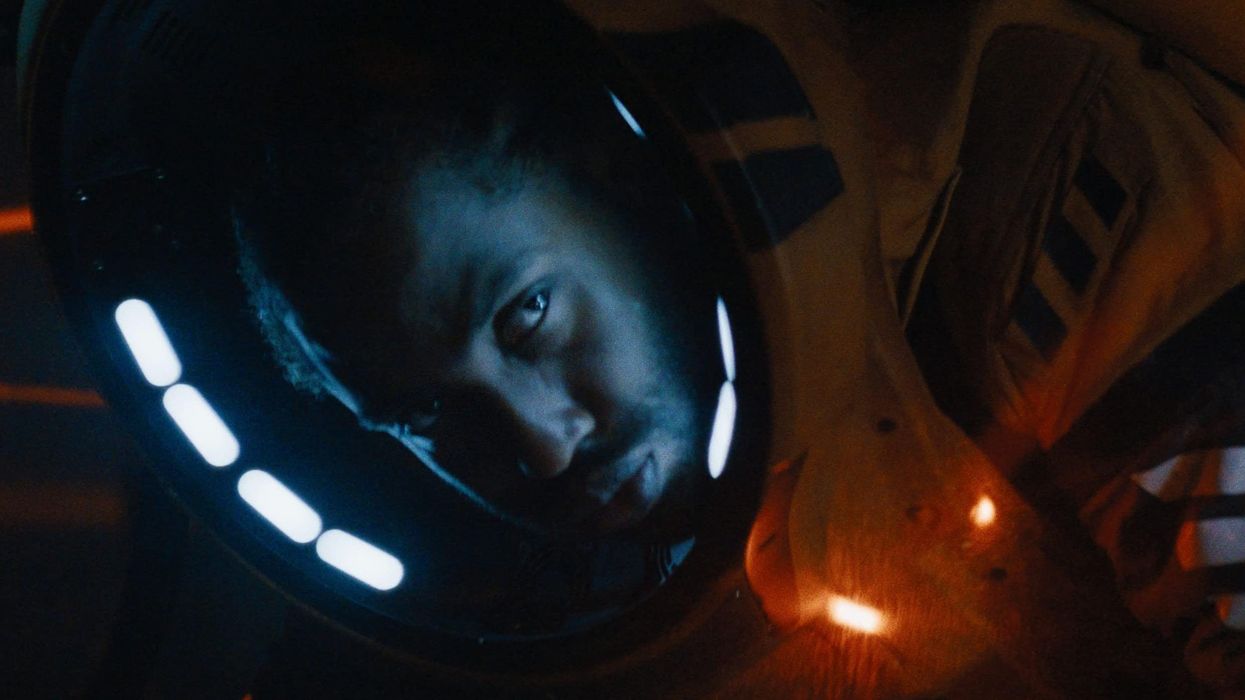How 'The Creator' Uses Indie Tools to Craft Its Cinematic Langauge
Cinematographer Oren Soffer talks about how he and the crew of The Creator crafting the stunning visual langauge of the film with indie tools.

'The Creator'
The Creator has quickly become one of the most stunning films of the year. While reviews for the film are mixed, and the box office has declared the film a bomb, making $61.8 million (according to Box Office Mojo) on an $80 million budget,The Creator is a visual masterpiece that should be celebrated.
Gareth Edwards and his small team, featuring DP Oren Soffer, who stepped into the cinematographer role after Greig Fraser had to leave the project to film Dune: Part Two, the crew created a world that is grounded in a way that feels real despite the futuristic elements.
With a minimal crew, great locations, minimal set-ups, and a fantastic VFX team from ILM, Edwards was able to bring his documentary-esque style to the future narrative film with the help of a five-dollar LUTs, a handheld gimbal, and a strong approach to contrast and shadows.
This is how Edwards and Soffer grounded this sci-fi epic and brought humanity to a large-scale story about humans and AI.
Filming Approach

BTS of 'The Creator'
Credit: 20th Century Studio
Since the beginning of his filmmaking career, Edwards has always been the person operating the camera on his project, capturing the world of his story as it unfolds before him.
In an interview with Patrick Tomasso, Soffer revealed that the crew creates a free-flowing playground that gives Edwards the freedom to flow through the space, creating some takes that last for 30 minutes.
"During the process of making the film, we didn't necessarily have a ton of direct conversations about film language," Soffer said to Tomasso. "Because I think that for Gareth, who was operating the camera, the film language part of it is instinctual. So he's reacting to, you know, what's happening in front of the camera, he's reacting to what the actors are doing, he's reacting to what the location is providing in terms of geometry and shapes in the frame and composition, and all of that... it's all intuitive and instinctual. That's what's guiding the framing decisions."
Playing With Contrast and Shadows
Modern cinematography has been going through some unique changes as sensors evolve. But Edwards and Soffer wanted to pay homage to the great contrast that lived in the films that served as references to The Creator.
To find this look on set, Edwards purchased a 1970s film grain LUT pack from the internet for $5. This was used as a foundation for the production LUT, which was combined with the look of Kodak film to elevate the moody shadows.
To support this LUT, a Helois tube on a boom pole was used to bounce light off nearby objects and surfaces to accentuate the highlights, further increasing the contrast and making sure the scene wasn't "too muddy," as Soffer put it.
While digital cameras like the Sony FX3 can capture great images in the moonlight, The Creator wanted to play with shadows and shapes to create dynamic images that looked organic and natural.
The Creator definitely shows off the talents of Edwards and his crew. No matter what kind of story you are telling, there is always a way to ground the story through visual language.
You don't need millions of dollars to create a stunning, cinematic world. Instead, focus on what you need to discover the look of the film with cheap tools that you can build on, play within the shadows to build the naturalness of the world, and let the environment and actors help whoever is operating the camera capture the small details that ground the story.
Source: YouTube
- How ‘The Creator’ Could Change How Hollywood Makes Movies Forever ›
- If Gareth Edwards and Greig Fraser Can Shoot a Sci-Fi Feature on a Sony FX3, So Can You ›
- How 'The Creator' DP Challenges Big Budget Filmmaking With an Indie Mindset | No Film School ›











